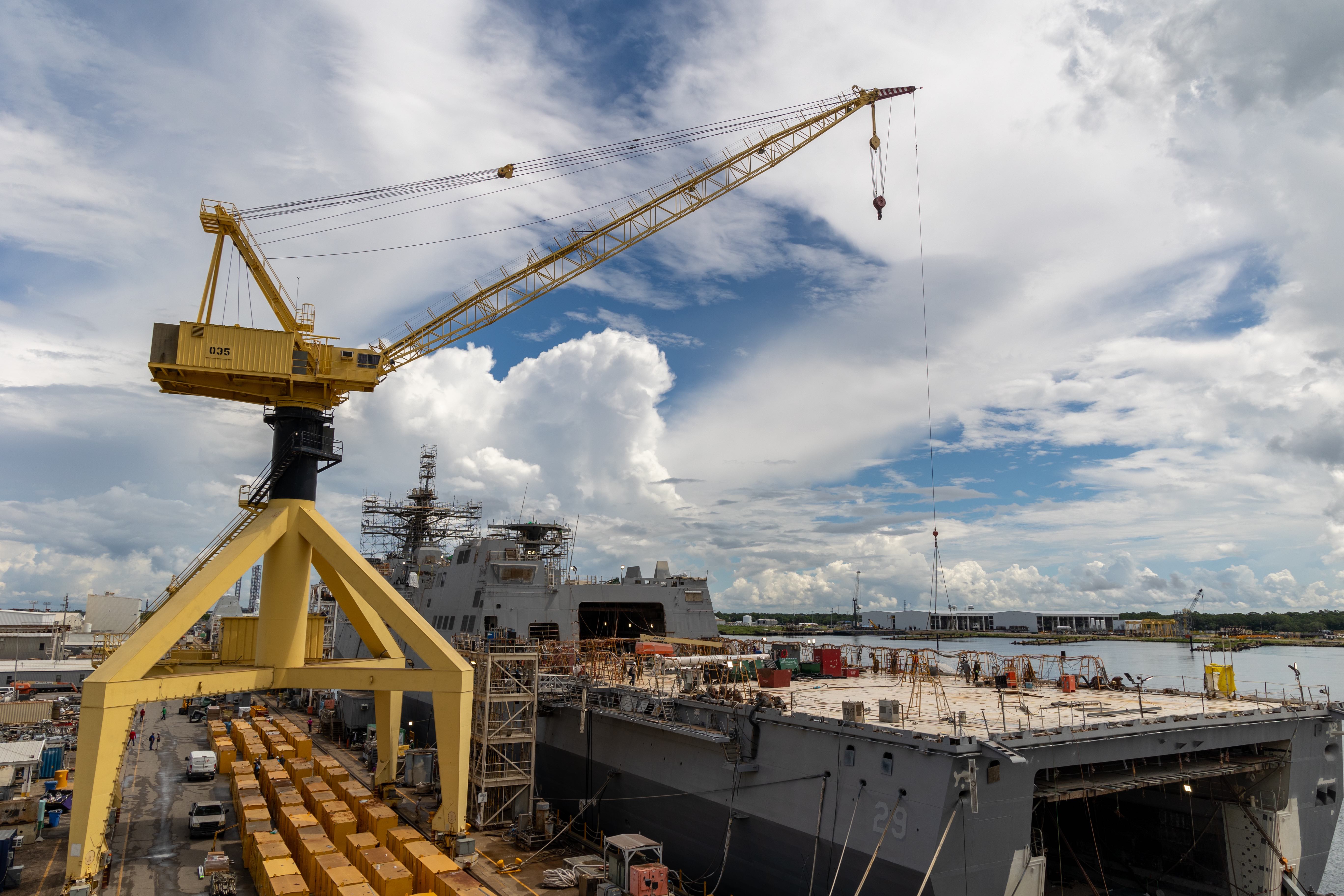
The Marine Corps’ top officer told a Senate panel that he put a $1.75 billion warship on the top of his unfunded priorities list to show there’s no path to expand the U.S. amphibious ship inventory.
Speaking before the Senate Appropriations defense subcommittee on Tuesday, Commandant Gen. David Berger said he saw a net reduction in the amphibious ship force because of the retirement of three older landing ship docks (LSDs) with no planned replacement with new shipbuilding. This prompted his decision to include funding for a San Antonio-class (LPD-17) amphib on his unfunded priorities list.
“This budget proposes early decommissioning of three of those LSDs with no construction or acquisition of an LPD. For my role as defining what the requirements are – the statutory minimum of 31 – there’s no plan to get there. From my perspective, I didn’t see any other way than to put it on the unfunded list in order to reflect that. There’s no plan to get to the minimum requirements,” he said in response to questions from Sen. Tammy Baldwin (D-Wis.).
Berger warned that without adequate amphibious shipping to support humanitarian assistance and disaster relief efforts, the U.S. runs the risk of China filling in with its own assets.
“When we can’t respond when we have to, then our allies’ and partners’ trust goes down. In all likelihood, the way the Chinese Navy is growing and they’re expanding, they’re liable to try to step in and we can’t afford that to happen,” he said.
Berger’s comments come as the Department of the Navy and Pentagon continue to struggle over how they will develop a future amphibious force. While Berger and other Navy leaders have acknowledged a requirement for 31 amphibious ships to meet the Marines’ latest island-hopping concept, the Navy zeroed out the budget line for new amphibious ships over the next five years, as the service takes a “strategic pause” on buying new gators while it takes on new studies mandated by the Pentagon, USNI News previously reported.
As part of the budget rollout earlier this month, Pentagon budget officials called the current amphibious ship inventory in the near-term “sufficient.”
Meanwhile, the Navy is working on the latest fleet assessment it plans to deliver to Congress – the Battle Force Ship Assessment and Requirement (BFSAR) – in late spring.
“I’ve committed to Congress to deliver that report by the 10th of June this year, and I will make that deadline. We are on track with our analysis team to do that,” Chief of Naval Operations Adm. Mike Gilday told the panel.
The new BFSAR is a follow-up on the assessment Congress ordered last year that put the goal of 373 ships to support the roles and missions required of the Navy in the long term. The details of the last year’s assessment were classified, but shortly after its delivery to Congress, Gilday issued a public plan for the Navy’s Force Design 2045.
The notional 2045 Navy calls for:
- 12 Columbia-class ballistic missile nuclear submarines
- 12 Aircraft carriers
- 66 Submarines, split between fast attack and large diameter payload boats
- 96 Large surface combatants like the Arleigh Burke class destroyer and the emerging DDG(X) next-generation destroyer
- 56 Constellation-class guided-missile frigates
- 31 Large amphibious ships
- 18 Light amphibious warships to support Marine Littoral Regiments
- 82 Combat logistics ships and auxiliaries
- 150 large surface and subsurface unmanned vessels that will act as sensors and auxiliary magazines to the manned fleet
He told the panel that he expected the underlying details of the plan to change with the new assessment.
“With respect to, not only the size, but the composition of the fleet, I would expect that to change from the last report, particularly in terms of composition. It’s too early to tell with respect to size, but quite honestly, I can’t see it getting any smaller than 373 manned ships,” Gilday said.
Sen. Lindsey Graham (R-S.C.) raised questions about how the service would meet its long-term shipbuilding goals when the current budget outlook results in a net negative of five battle force ships from now through Fiscal Year 2028. Under its latest long-range shipbuilding plan, the service would need to craft a budget at about 5 percent above the rate of inflation to hit its 373 goal, Gilday told Graham.
“If we’re at 296 [battle force ships] today and under this budget, we’re going to be at 291 in [Fiscal Year] 28. How do we get to 373?” Graham asked.
“The budget you’re supporting July 26, 2024 is below inflation. And you’re telling us to get to where we want to go, we’ve got to be above inflation by 5 percent. If this is a good budget, I would hate to see a bad budget.”
Graham asked Secretary of the Navy Carlos Del Toro if the bottleneck was due to funding or shipbuilding capacity
“Do we have a shipbuilding industry problem, or do we have a budget problem?” Sen. Lindsey Graham (R-S.C.) asked Del Toro.
“We have a shipbuilding industry problem, currently Senator,” Del Toro said.





